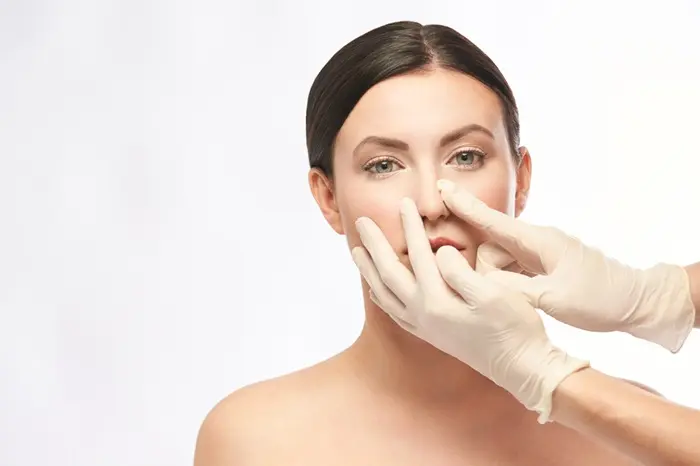Rhinoplasty, commonly known as a nose job, is a complex surgical procedure that aims to reshape the nose for aesthetic or functional purposes. One of the concerns patients may face post-surgery is the drooping of the nose tip. Nose tip droop can significantly affect the overall appearance of the nose and lead to dissatisfaction with the surgical results. Understanding the causes of nose tip droop is essential for both patients and surgeons to ensure optimal outcomes. This article explores six primary reasons that may cause nose tip droop after rhinoplasty.
1. Inadequate Structural Support
Lack of Proper Cartilage Support
The nose tip is primarily supported by cartilage, particularly the lower lateral cartilages. If these cartilages are weak or insufficiently supported during rhinoplasty, the tip may droop over time. Surgeons must carefully assess the strength and configuration of the nasal cartilages and reinforce them if necessary.
Weak Nasal Septum
The nasal septum, the wall separating the two nasal passages, plays a crucial role in supporting the nose tip. A weak or deviated septum can fail to provide adequate support, leading to tip droop. Septal cartilage grafts are often used to strengthen the septum and prevent this issue.
2. Excessive Removal of Cartilage or Bone
Over-Resection of Cartilage
Removing too much cartilage during rhinoplasty can compromise the structural integrity of the nose. Over-resection can result in insufficient support for the nose tip, causing it to droop. Surgeons must balance the removal and preservation of cartilage to maintain the desired shape and function.
Over-Resection of Bone
Similarly, removing excessive bone from the nasal framework can lead to instability and tip droop. Careful planning and precise execution are essential to avoid over-resection and ensure the nose retains its structural support.
See Also: 7 Reasons Why Your Eyes May Bruise After Rhinoplasty
3. Inadequate Grafting Techniques
Insufficient Use of Grafts
Grafts are often used in rhinoplasty to provide additional support and shape to the nose. If insufficient grafts are used or if they are not placed correctly, the nose tip may lack the necessary support and droop over time. Surgeons must use appropriate grafting techniques to reinforce the nasal structure.
Poor Graft Integration
Grafts need to integrate well with the existing nasal tissues to be effective. Poorly integrated grafts can fail to provide the needed support, leading to nose tip droop. Ensuring proper graft placement and integration is crucial for long-term stability.
4. Post-Surgical Healing and Scar Tissue Formation
Healing Process Variations
The healing process after rhinoplasty can vary significantly between individuals. Some patients may experience excessive scar tissue formation, which can contract and pull the nose tip downward. Monitoring the healing process and addressing any complications early can help mitigate this risk.
Scar Tissue Impact
Scar tissue can impact the flexibility and movement of nasal structures. Excessive scar tissue around the nose tip can restrict its movement and cause it to droop. Surgeons should be vigilant about managing scar tissue during the recovery period.
5. Gravity and Aging
Effects of Gravity
Gravity naturally affects all parts of the body over time, including the nose. The downward pull of gravity can gradually cause the nose tip to droop, especially if the structural support is already compromised. Understanding the long-term effects of gravity is important for realistic expectations post-surgery.
Aging-Related Changes
As individuals age, the skin and tissues of the nose can lose elasticity and firmness. This natural aging process can contribute to nose tip droop. While rhinoplasty can rejuvenate the nose, patients should be aware of the potential for future changes due to aging.
6. Technical Errors During Surgery
Incorrect Surgical Techniques
Technical errors during rhinoplasty, such as improper incisions or incorrect cartilage manipulation, can result in an unstable nasal structure. These errors can lead to tip droop post-surgery. Surgeons must have a thorough understanding of nasal anatomy and employ precise techniques to avoid such issues.
Inadequate Post-Operative Care
Post-operative care is crucial for the success of rhinoplasty. Inadequate care, such as not following post-surgical instructions or neglecting follow-up appointments, can contribute to complications, including nose tip droop. Patients should adhere to their surgeon’s recommendations to ensure proper healing and support.
Conclusion
Nose tip droop after rhinoplasty can be a distressing outcome for patients. Understanding the various causes, from inadequate structural support to technical errors during surgery, is essential for preventing and addressing this issue. Surgeons must employ meticulous techniques, use appropriate grafts, and provide comprehensive post-operative care to ensure optimal results. Patients, on the other hand, should follow their surgeon’s advice and have realistic expectations regarding the long-term changes in their nasal structure. With proper planning and execution, the risk of nose tip droop can be minimized, leading to satisfactory and lasting results.
Related topics:

